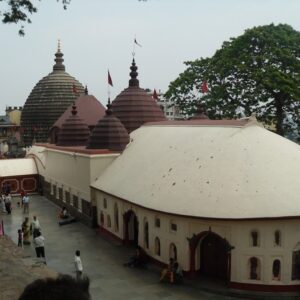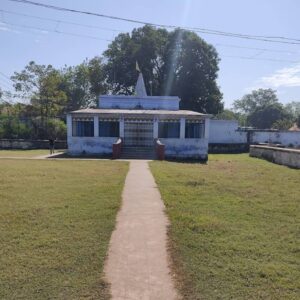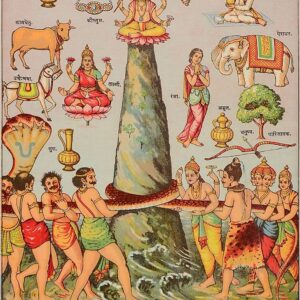Bhai Tika, Bhai Dooj, Bhaubeej, Bhai Phonta or Bhratri Dwitiya is a festival celebrated by Hindus on the second lunar day of the Shukla Paksha (bright fortnight) of Kartika, the eighth month of the Vikram Samvat Hindu calendar or the Shalivahana Shaka calendar. It is celebrated during the Diwali or Tihar festival and Holi festival. The celebrations of this day are similar to the festival of Raksha Bandhan.
A traditional Newari painting about Kija puja’s legend.
In the southern part of India, the day is celebrated as Yama Dwitiya. In the Kayastha community, two Bhai Doojs are celebrated. The more famous one comes on the second day after Diwali. But the lesser-known one is celebrated a day or two after Diwali. In Haryana and Uttar Pradesh a ritual also followed, a dry coconut (named gola in regional language) with klewa[clarification needed] tied along its width for worshipping is also used at the time of doing aarti of a brother. In Bengal the day is celebrated as Bhai Phota, which comes one day after Kali Puja.
Regional names
The festival is known as:
Bhai Dooj (Hindi: भाई दूज) in entire Northern part of India, observed during the Diwali festival. In Awadh and Purvanchal regions of Uttar Pradesh and Bihar, it is also known as Bhaiya Dooj. It is widely celebrated by Maithils in Nepal and Bihar as Bhardutiya and people from various other ethnic groups. The first day of this New Year is observed as Govardhan Pūja.
Bhai Teeka (Nepali: भाइटीका) in Nepal, where it is the most important festival after Dashain (Vijaya Dashmi / Dussehra). Observed on the fifth day of Tihar festival, it is widely celebrated by Maithils in Nepal as Bhardutiya Bhai Tika followed by the people of various other ethnic groups among Madhesis. While, the Newaris celebrate it as Kija Puja. The sisters put a vertical Tika of seven colours known as Saptarangi Tika in their brother’s forehead.
Bhai Phonta (Bengali: ভাই ফোঁটা) in Bengal and it takes place every year on the second day after Kali Puja. It is mainly observed in West Bengal, Tripura, Bangladesh.
Bhai Jiuntia (Odia: ଭାଇ ଜିଉନ୍ତିଆ) only in western Odisha.
Bhau Beej, or Bhav Bij (Marathi: भाऊ बीज) or Bhai Beej amongst the Marathi, Gujarati and Konkani-speaking communities in the states of Maharashtra, Goa, Gujarat and Karnataka.
Another name for the day is Yamadwitheya or Yamadvitiya, after a legendary meeting between Yama the god of Death and his sister Yamuna (the famous river) on Dwitheya (the second day after new moon).
Other names include Bhatru Dviteeya, or Bhatri Ditya or Bhaghini Hastha Bhojanamu in Andhra Pradesh and Telangana.
According to a popular legend in Hindu religion, after slaying the evil demon Narakasura, Lord Krishna visited his sister Subhadra who gave him a warm welcome with sweets and flowers. She also affectionately applied tilaka on Krishna’s forehead. Some believe this to be the origin of the festival.













Reviews
There are no reviews yet